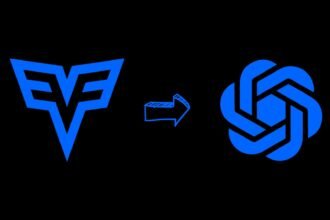ComfyUI is revolutionizing the intersection of AI and art, providing a fresh and fascinating platform for those interested in the synergy between Stable Diffusion algorithms and artistic creation.
This tool, renowned for its simplicity and intelligent architecture, is a game-changer for developers and artists alike, enabling the creation of ultra-realistic images. It’s especially appealing to those passionate about exploring new frontiers in art.
In this guide, we delve into the utilization of ComfyUI for crafting an AI Instagram model, blending technological innovation with the traditional art of portrait creation. Let’s embark on a journey with ComfyUI to uncover the possibilities that lie at the crossroads of AI and art.
ComfyUI Overview
ComfyUI is a sophisticated, modular graphical user interface meticulously crafted to enrich the experience of working with Stable Diffusion, a leading-edge generative art algorithm.
Its node-based system affords users, notably developers and artists, the versatility to devise custom workflows for generating images that are strikingly realistic.
The charm of ComfyUI lies in its user-centric design, adaptability, and the capability to efficiently handle intricate tasks, securing its position as a go-to tool for enthusiasts aiming to experiment with an array of artistic styles and expressions.
How to Use ComfyUI to Make an AI Instagram Model
To create an AI Instagram model using ComfyUI, follow these detailed steps to harness the platform’s powerful capabilities:

1. Setting Up ComfyUI
Start by installing and updating ComfyUI. If prompted, use the ComfyUI manager to install any required extensions and restart the program for optimal functionality.
2. Selecting the AI Model and Initial Settings
Launch a default ComfyUI workflow and choose the SDXL checkpoint model from the realism engine for high-quality results. Define specific characteristics for your character, such as hair color.
3. Generating and Refining the Character’s Face
Produce an initial image of your character. If the first result isn’t ideal, continue generating until you find one with suitable lighting and features.
Use the ultimate SD upscale to improve image quality. Connect your character image to the upscale model loader, choose an upscale model, and initiate the upscaling.
4. Creating Consistency with IP Adapter and Control Net
For consistent appearances in different images, use an IP adapter with the control net method. Upload an image of the desired outfit and your character’s face. Incorporate two IP adapter apply nodes connected to an IP adapter model.
Attach clip vision to both IP adapter apply nodes. Mask the face and hair areas on the outfit image and link them to the IP adapter apply nodes, adjusting the weight settings for model flexibility.
5. Fine-Tuning and Adding Details
Adjust your image dimensions for a portrait layout, optimally 512×768 pixels. Integrate control net into your workflow, linking clip text boxes to the key sampler.
Load a control net model like Open Pose to interpret human poses accurately. Modify sampling steps and DNO strength to refine your image. You can deactivate the upscaler if necessary during this process.
6. Finalizing and Experimenting with Variations
Produce your final character image. Reactivate the upscaler for a high-quality finish. Experiment with various poses, ensuring consistent facial features and attire.
Enhance each new image with the upscaler for improved visuals. Modify the positive prompt to introduce emotions or alter backgrounds, creating varied scenes while preserving the character’s identity.
Features of ComfyUI
ComfyUI is packed with features that amplify its efficiency and user experience:
- Asynchronous Queue System: Manages multiple projects smoothly, ensuring uninterrupted workflow.
- Broad Hardware Compatibility: Supports GPU (minimum 3GB VRAM) and CPU, accommodating various system configurations.
- Model Flexibility: Compatible with diverse models, including ckpt, safetensors, diffusers, standalone VAEs, and CLIP models.
- Smart Workflow Optimization: Processes only altered parts of a workflow, speeding up image generation, especially in complex scenarios.
- Workflow Preservation: Allows saving and loading of workflows, making it easy to share projects or revisit them.
With ComfyUI, artists and developers can push the boundaries of AI-generated art, creating stunning, lifelike virtual influencers and models, all while navigating the platform’s rich and intuitive interface.
Creating AI Instagram Models: Safety and Considerations
Crafting AI Instagram models entails employing AI to generate virtual influencers. These models provide cost efficiency, complete content control, and boundless creative freedom. Nonetheless, it’s essential to be mindful of several factors:
- Ethical Concerns: The use of virtual influencers comes with ethical questions regarding the authenticity and transparency of their presence on social media. Reflecting on how they might influence perceptions of reality and genuineness is crucial.
- Potential Misuse: As with any technology, the risk of misuse exists. It’s vital to ensure its responsible application to prevent deceptive practices.
- Impact on Human Influencers: It’s important to consider the potential effects that AI models may have on the careers and perceptions of real human influencers.
- Transparency: Being upfront about the AI origins of these models is imperative to preserve trust and adhere to ethical standards.
FAQs: ComfyUI
-
How does ComfyUI aid in creating an AI Instagram model?
It simplifies the process by providing tools for character generation, refinement, and consistent image quality.
-
What are the key features of ComfyUI?
Features include an asynchronous queue system, broad hardware compatibility, model flexibility, and smart workflow optimization.
-
Are there ethical considerations in creating AI Instagram models?
Yes, concerns include authenticity, potential misuse, impact on human influencers, and the need for transparency.
-
What makes ComfyUI stand out in generative art creation?
Its user-centric design, adaptability, and efficient handling of complex tasks make it a top choice for artists.
Conclusion
ComfyUI is a testament to the transformative potential of AI in redefining the artistry of image creation. With its intuitive and modular interface, artists and developers can effortlessly navigate through the complexities of Stable Diffusion, producing images that are remarkably realistic.
The process of creating an AI Instagram model using ComfyUI not only showcases the capabilities of the tool but also illuminates the vast creative prospects within the realm of AI. While this technology paves new avenues for artistic expression, it’s imperative to approach it with mindfulness, considering the ethical implications and the impact on societal perceptions of reality.
ComfyUI embodies the fusion of efficiency and creativity, marking a significant milestone where art and technology converge to forge something truly remarkable.









